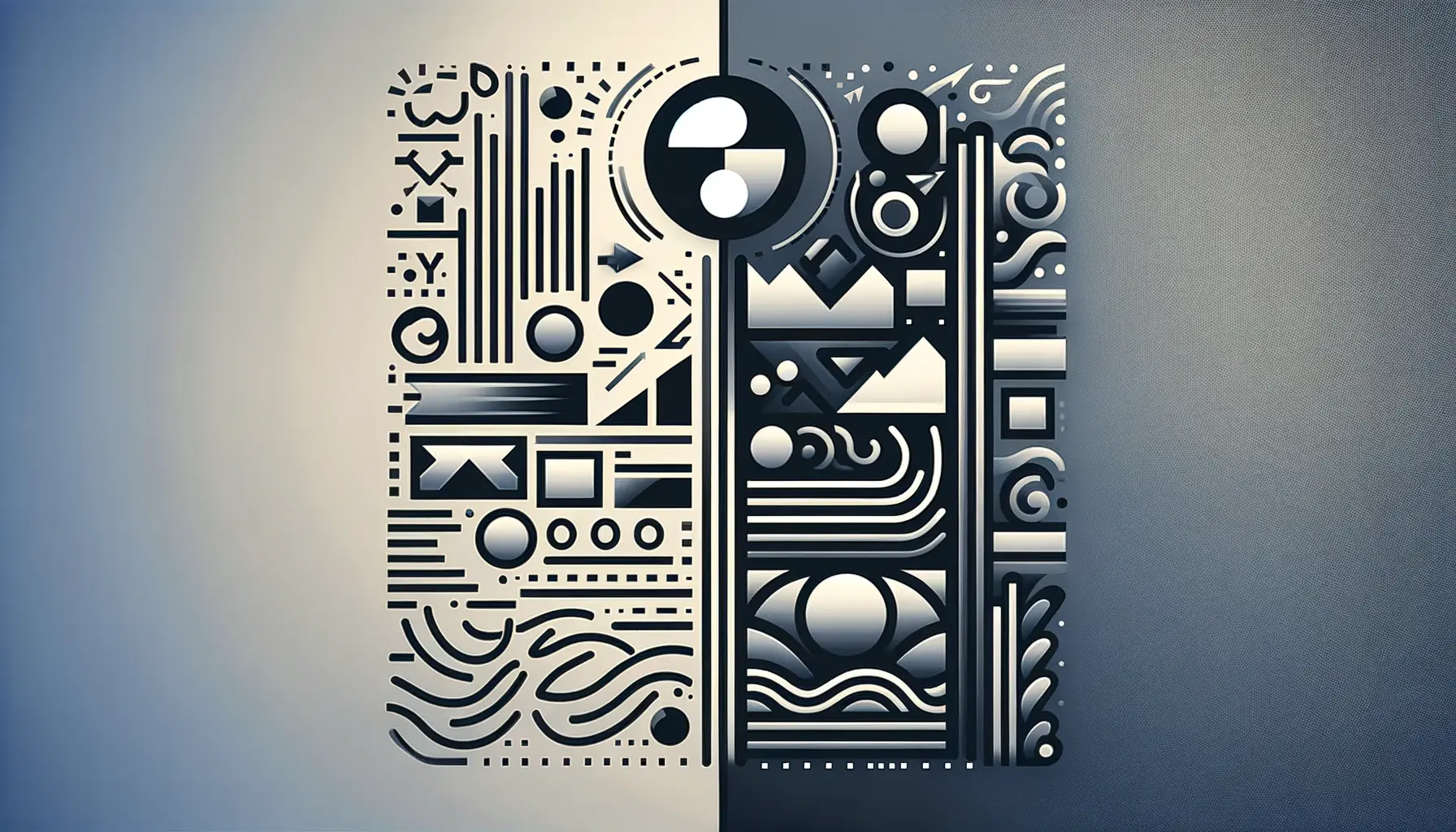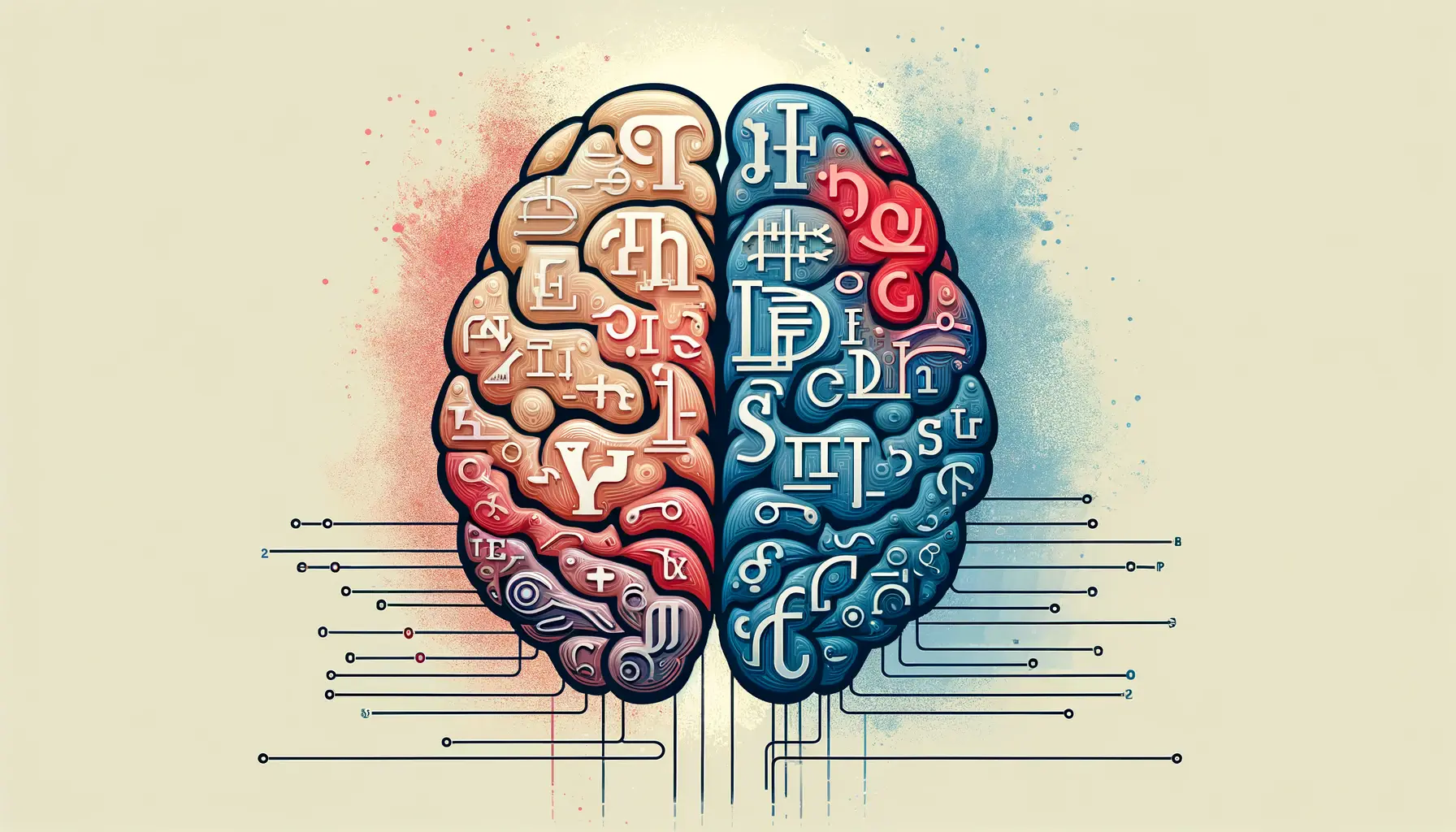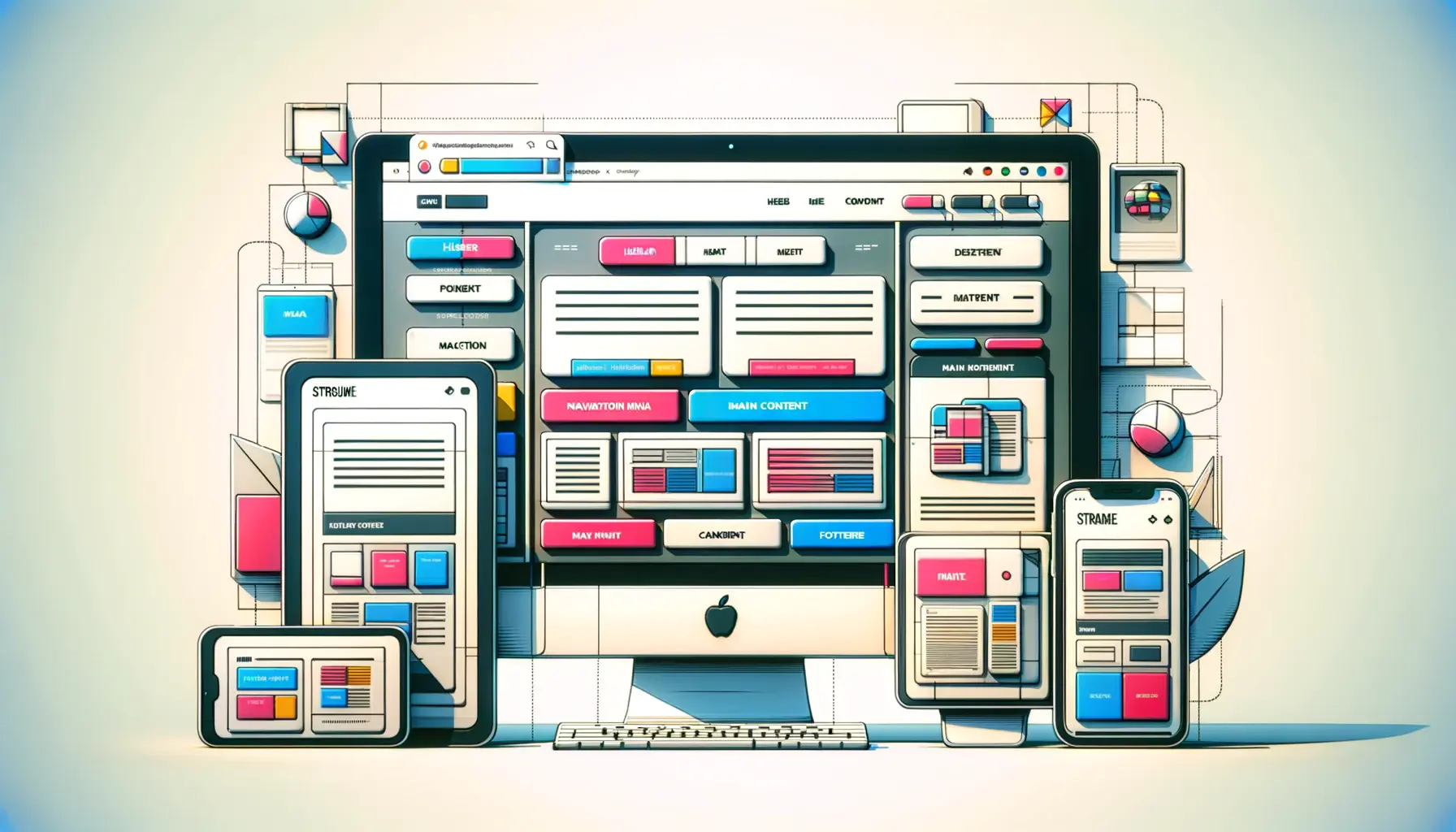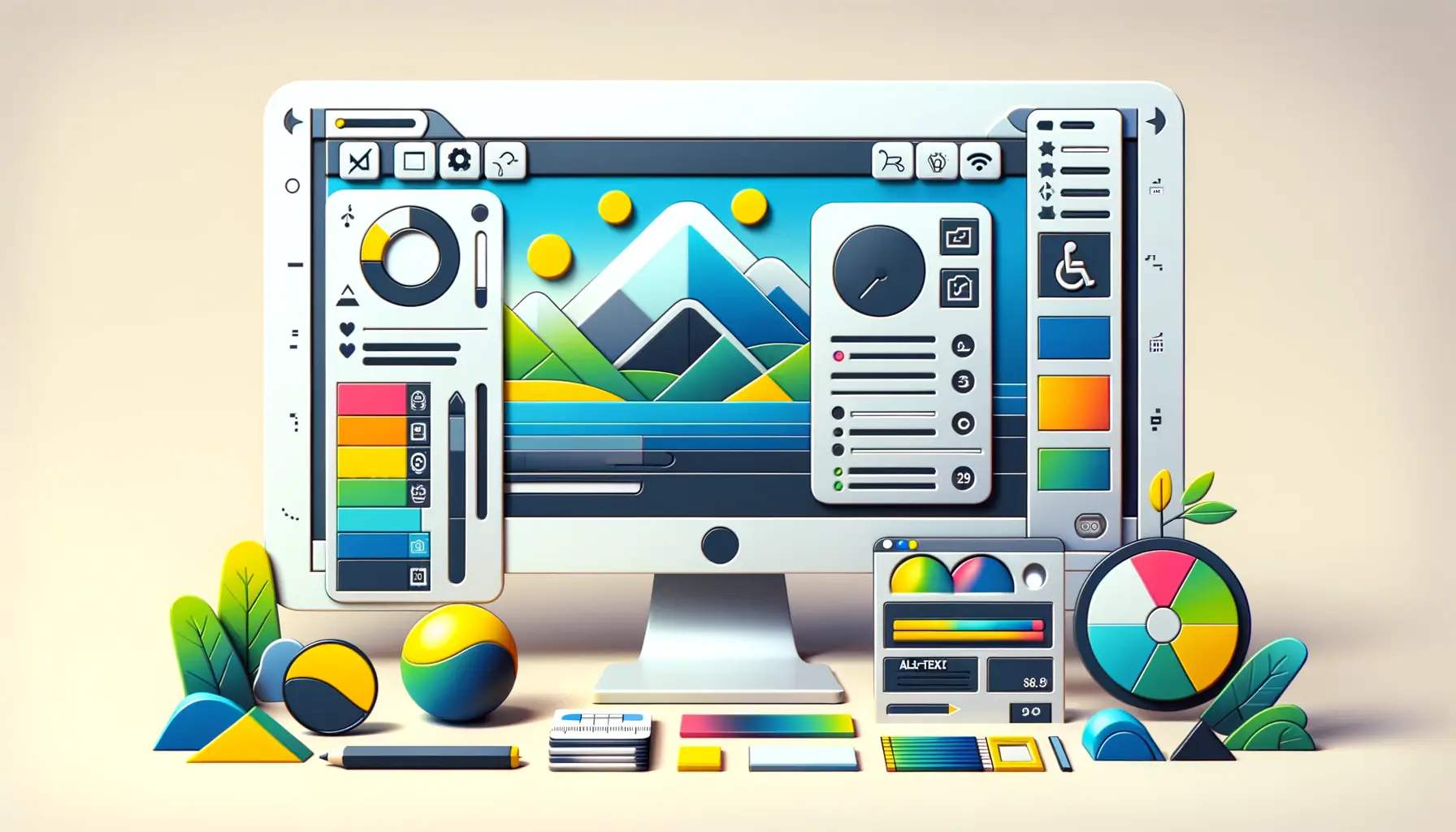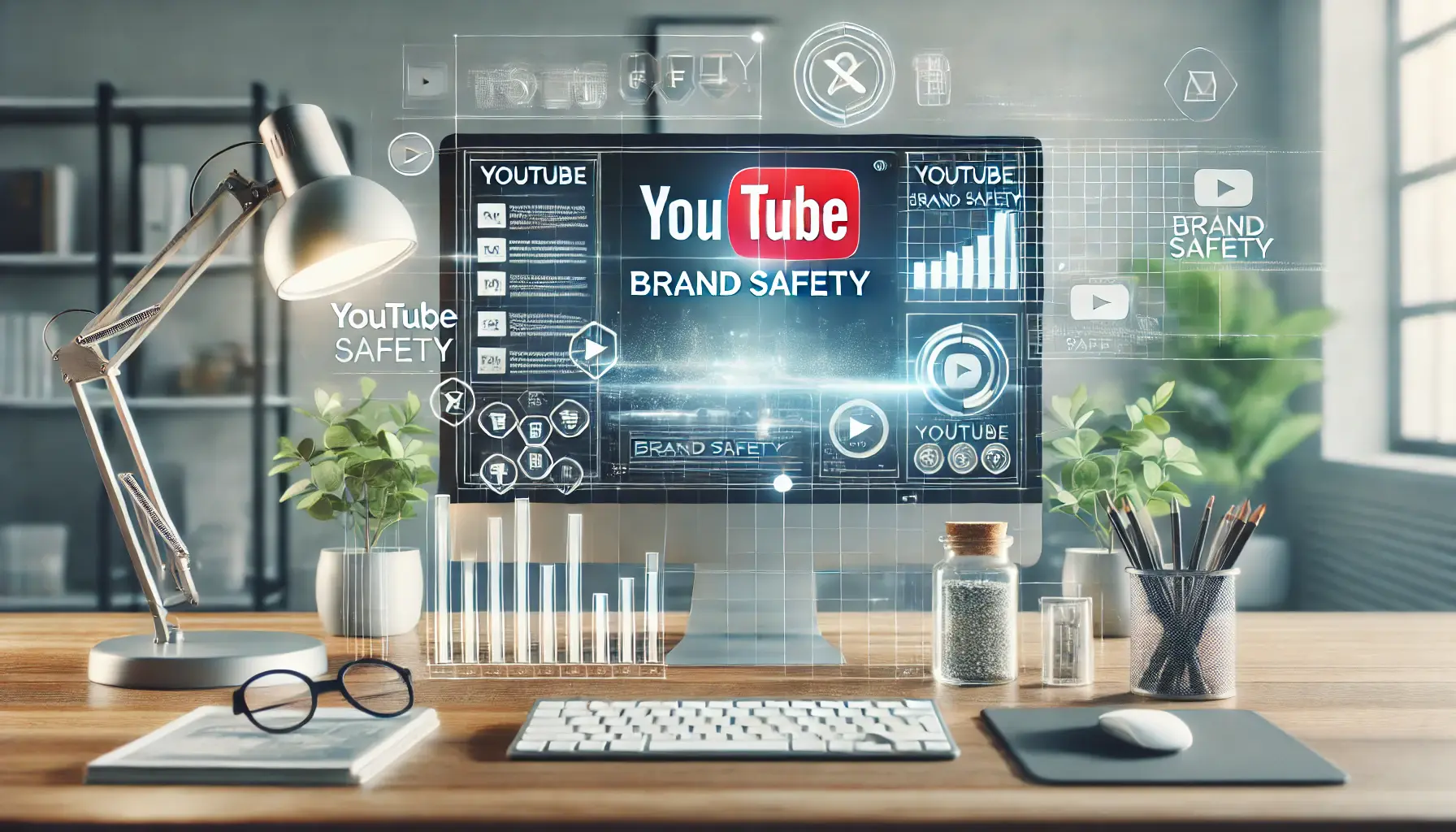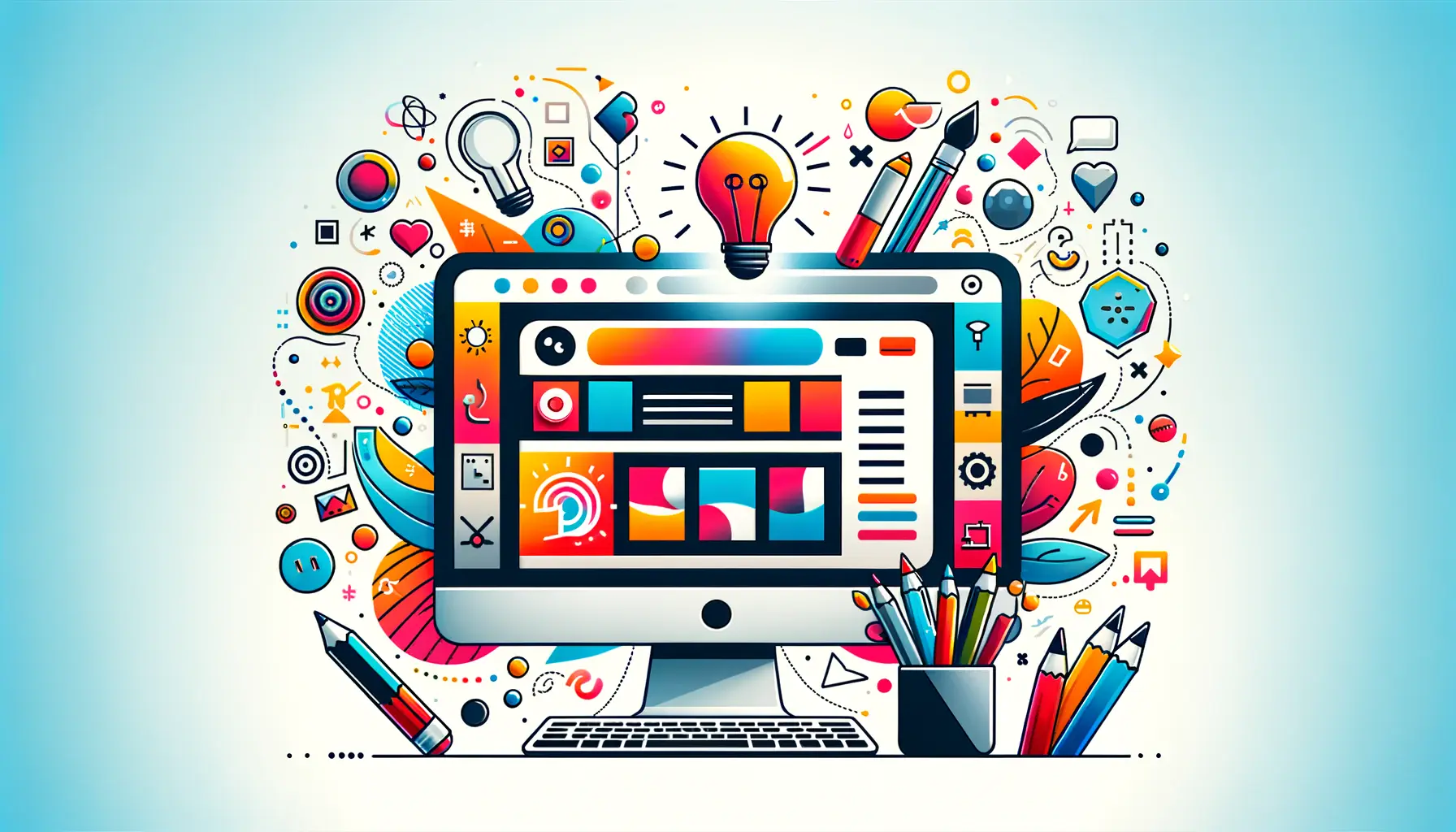Creating an iconic typographic logo is more than just selecting a font and typing out your brand’s name.
It’s an art form that combines typography, branding, and design principles to craft a visual identity that communicates your brand’s essence at a glance.
An iconic typographic logo not only distinguishes you from your competitors but also embeds your brand in the minds of your audience, making it unforgettable.
This process involves a deep understanding of your brand’s core values, the message you want to convey, and how typography can be leveraged to express these elements compellingly.
Typography in logo design is a critical element because it carries the weight of brand identity and communication.
The choice of typeface, the spacing between letters, and the integration of logo elements with typographic characters can transform a simple text into a powerful brand symbol.
An iconic typographic logo transcends the mere representation of a brand’s name; it evokes emotions, conveys values, and tells a story.
This article will guide you through the steps to create a typographic logo that is not only iconic but also resonates with your target audience, ensuring your brand’s message is seen, understood, and remembered.
- Understanding the Basics of Typography in Logo Design
- Integrating Brand Personality and Values
- Color Theory and Its Impact on Logo Design
- Typography and Brand Identity
- Designing for Versatility and Scalability
- Engaging Your Audience with Storytelling
- Optimizing for Digital and Print Media
- Creating an Iconic Typographic Logo: A Comprehensive Guide
- FAQs on Creating an Iconic Typographic Logo
Understanding the Basics of Typography in Logo Design
The Significance of Typeface Selection
Choosing the right typeface for your logo is the first step towards creating an iconic typographic logo.
The typeface you select should reflect your brand’s personality, whether it’s elegant, quirky, strong, or minimalist.
Each font carries its own set of connotations and emotional impacts.
For instance, serif fonts are often associated with tradition and reliability, while sans-serif fonts are seen as modern and approachable.
Script fonts can convey elegance or creativity, depending on their style.
The key is to choose a typeface that aligns with your brand’s identity and the message you wish to communicate.
Moreover, the uniqueness of your chosen typeface plays a crucial role in setting your brand apart.
Custom or modified fonts can offer exclusivity and help avoid the pitfall of your logo looking similar to others.
Remember, an iconic logo is distinctive and memorable, and your typeface selection is foundational in achieving this.
Mastering the Art of Letter Spacing
Letter spacing, or kerning, is another critical aspect of typographic logo design.
Proper kerning ensures that the spacing between each character is visually pleasing and that the logo is legible across various mediums.
Too much spacing can make the logo look disjointed, while too little can cause the letters to blend into one another, reducing readability.
The goal is to achieve a balance where each letter stands out individually but also contributes to a cohesive whole.
Effective kerning contributes significantly to the logo’s overall impact and readability.
It requires a keen eye for detail and an understanding of how different characters interact with each other.
Sometimes, slight adjustments to the spacing can make a substantial difference in the logo’s appearance and effectiveness.
An iconic typographic logo is not just seen; it’s experienced. Through careful selection of typeface and meticulous kerning, you can create a logo that embodies your brand’s essence and communicates its values at a glance.
Integrating Brand Personality and Values
Creating a typographic logo that resonates with your audience requires more than just aesthetic appeal; it must be a reflection of your brand’s personality and core values.
This integration is crucial for establishing a connection with your target market and ensuring your logo is not only iconic but meaningful as well.
The design process should start with a deep dive into what your brand stands for and the message you want to convey through your logo.
Every aspect of your typographic logo, from the font style to the color scheme, should be a direct representation of your brand’s identity.
This coherence between your brand values and your logo’s design is what makes a logo iconic and memorable.
To achieve this, consider the following elements:
- Font Style: Choose a font that mirrors your brand’s character. A tech company might opt for a clean, sans-serif font to convey innovation and efficiency, whereas a luxury brand might select a serif font to express elegance and tradition.
- Color Psychology: Colors play a pivotal role in logo design, as they can evoke specific emotions and associations. Select colors that align with the feelings you wish to associate with your brand. For example, blue can evoke trust and dependability, while green is often associated with growth and health.
- Shape and Form: The shape of your typographic elements can also convey certain messages. Round shapes are perceived as friendly and approachable, while angular shapes can suggest precision and professionalism.
Case Study: A Brand’s Transformation Through Typography
Consider the rebranding of a well-known coffee chain, which shifted from a complex logo to a simpler, more typographic one.
This change was not merely aesthetic but strategic.
The new logo used a sans-serif font to portray a more modern and approachable brand image, aligning with the company’s vision of being a contemporary space for coffee lovers.
The simplicity of the typography, combined with a warm color palette, reflected the brand’s core values of warmth, community, and simplicity.
This rebranding effort shows how typography can be a powerful tool in conveying a brand’s personality and values effectively.
Integrating your brand’s personality and values into your typographic logo is a nuanced process that requires thoughtful consideration of various design elements.
By aligning these elements with what your brand stands for, you create not just a logo, but a symbol that carries the essence of your brand, making it iconic in the truest sense.
Your logo is the face of your brand. Ensure it accurately reflects your brand’s personality and values to create a lasting impression on your audience.
Color Theory and Its Impact on Logo Design
The psychology of color is a pivotal aspect of creating an iconic typographic logo.
Colors have the power to influence perception and evoke emotions, making their selection crucial in the design process.
The right color can enhance your logo’s impact, making it more memorable and effective in conveying your brand’s message.
Understanding color theory and its implications on branding will guide you in choosing a palette that complements your typographic design and aligns with your brand’s identity.
When integrating color into your typographic logo, consider the following principles:
- Emotional Influence: Different colors evoke different emotions. For example, red can signify passion and energy, while blue might convey trust and calmness. Select colors that reflect the emotional tone you want to associate with your brand.
- Brand Consistency: The colors you choose should be consistent with your overall brand palette. This consistency helps in building brand recognition and ensures that your logo is an integral part of your brand identity.
- Visibility and Legibility: Ensure that the color contrast between your typography and its background is high enough to maintain visibility and legibility across various applications and sizes.
Choosing the Right Color Palette
Selecting the right color palette for your logo involves more than just picking your favorite colors.
It requires a strategic approach that considers your brand’s values, target audience, and the psychological impact of colors.
A well-chosen color palette can significantly enhance the effectiveness of your logo, making it stand out and resonate with your audience.
To choose the right color palette, consider conducting market research to understand the color preferences of your target demographic.
Additionally, look at your competitors’ color choices to ensure your logo stands out while still aligning with industry standards.
Applying Color Theory to Typography
When applying color theory to typographic logos, it’s essential to balance aesthetics with functionality.
The colors should not only align with your brand’s identity but also maintain the logo’s legibility and versatility.
For instance, a minimalist approach with a monochromatic scheme or using a single accent color can create a strong impact without overwhelming the design.
Moreover, consider the different contexts in which your logo will be used, from digital platforms to print materials, and ensure that your chosen colors translate well across all mediums.
This adaptability is key to creating an iconic typographic logo that remains effective and consistent in various applications.
Remember, the goal is to use color to enhance the emotional and visual appeal of your logo, making it a powerful tool in your brand’s visual identity.
Typography and Brand Identity
Typography is not just a tool for conveying messages; it’s a critical component in building and expressing a brand’s identity.
The fonts and typographic styles you choose can significantly influence how your audience perceives your brand, making typography a powerful element in branding strategy.
An iconic typographic logo leverages typography to encapsulate and communicate the essence of the brand, creating a visual identity that is both distinctive and memorable.
To effectively use typography in reinforcing your brand identity, consider the following strategies:
- Consistency Across Branding: Ensure that the typography used in your logo is consistent with other branding materials. This consistency helps in reinforcing brand recognition and creates a cohesive brand experience for your audience.
- Typography as a Brand Storyteller: Your choice of typography should reflect your brand’s story and values. Whether it’s the strength and reliability conveyed by a bold, sans-serif font or the elegance and sophistication of a script font, the typography in your logo should tell your brand’s story at a glance.
- Custom Typography for Uniqueness: Consider custom or modified typography for your logo to create a unique visual element that sets your brand apart from competitors. Custom typography can be tailored to reflect your brand’s personality and values more accurately than off-the-shelf fonts.
Aligning Typography with Brand Personality
The alignment of typography with your brand’s personality is crucial for creating a logo that resonates with your target audience.
This alignment ensures that the visual representation of your brand is in harmony with its core values and messaging.
For instance, a playful and youthful brand might opt for a light-hearted, whimsical font, while a more serious, professional brand would benefit from a more straightforward, clean typeface.
Understanding your brand’s personality and how it wants to be perceived in the market is the first step in selecting typography that embodies these traits.
This strategic choice helps in crafting a logo that not only stands out but also communicates the brand’s essence effectively.
Impact of Typography on Brand Perception
The impact of typography on brand perception cannot be overstated.
The right typographic choices can elevate a brand, making it appear more professional, reliable, and trustworthy.
Conversely, poor typographic choices can detract from a brand’s credibility and overall perception.
It’s essential to consider how your typographic logo will be perceived by your target audience and to make choices that enhance your brand’s image.
By carefully selecting typography that aligns with your brand identity and personality, you can create a typographic logo that not only captures attention but also fosters a deeper connection with your audience.
This connection is what transforms a simple logo into an iconic symbol of your brand.
Effective typography is a key element in creating a brand identity that is both visually appealing and emotionally resonant with your audience.
Designing for Versatility and Scalability
An iconic typographic logo must be versatile and scalable, capable of adapting to various mediums and sizes without losing its impact or legibility.
This adaptability is crucial in today’s multi-platform world, where your logo must perform well on everything from a tiny mobile screen to a large billboard.
Designing with versatility and scalability in mind ensures that your logo remains effective and recognizable across all brand touchpoints.
To achieve a versatile and scalable typographic logo, consider the following guidelines:
- Simple is Better: A simple typographic design is more likely to retain its legibility and impact when scaled down for smaller applications. Avoid overly complicated fonts or designs that may become unreadable at small sizes.
- Consider All Use Cases: Think about all the potential applications of your logo, including digital, print, merchandise, and beyond. Your logo should be designed to work well in both color and black and white, ensuring it’s versatile across various uses.
- Test Extensively: Test your logo design at various sizes and in different contexts to ensure it maintains its integrity. This testing can help identify any potential issues with scalability or versatility before finalizing the design.
Responsive Logo Design
Responsive logo design is a concept where a logo adapts to different sizes and spaces while maintaining its essence.
This approach often involves creating variations of your logo that can be used in different contexts, such as a simplified version for small sizes or a more detailed version for larger applications.
By planning for responsiveness from the start, you can ensure your typographic logo remains functional and recognizable, no matter where it appears.
Implementing a responsive design strategy for your typographic logo involves understanding the core elements of your logo that must remain consistent across all versions.
These elements serve as the visual anchor for your brand, ensuring that, despite variations, the logo is always identifiable as yours.
Scalability Considerations
When designing for scalability, it’s essential to consider the technical aspects of your logo, such as the resolution and file formats.
Vector formats, for example, are ideal for logos because they can be scaled to any size without losing quality.
Additionally, consider the smallest size your logo will be used at and design with that size in mind to ensure that even the most diminutive version of your logo is clear and impactful.
By prioritizing versatility and scalability in your typographic logo design, you create a more robust and effective brand identity that can stand the test of time and technology.
This foresight in design not only enhances brand recognition but also ensures that your logo can adapt to future branding needs and opportunities.
A versatile and scalable logo is a cornerstone of a strong brand identity, ensuring your logo remains effective and recognizable across all platforms and sizes.
Engaging Your Audience with Storytelling
Storytelling is a powerful tool in branding, capable of engaging and connecting with your audience on a deep emotional level.
An iconic typographic logo does more than represent your brand visually; it tells your brand’s story, embodying its history, values, and mission.
Incorporating storytelling into your logo design process can transform a simple typographic element into a compelling narrative that resonates with your audience.
To weave storytelling into your typographic logo, consider the following approaches:
- Convey Your Brand’s Origin: Use typography to hint at your brand’s origins or founding principles. This could be through the choice of a typeface that reflects the era or region your brand originates from, or through subtle design elements that hint at your brand’s backstory.
- Embody Brand Values: Select typographic elements that reflect your brand’s core values. For example, a brand that prides itself on innovation might choose a modern, cutting-edge font, while a brand focused on sustainability might opt for a design that incorporates natural or organic elements.
- Create Emotional Connections: The right typography can evoke specific emotions, helping to create a deeper connection with your audience. Consider the emotional impact of your typographic choices and how they can enhance the narrative you want to convey.
Typography as a Narrative Element
Typography can be a subtle yet powerful narrative element in your logo design.
Through the use of specific fonts, styles, and design techniques, you can tell a story that engages your audience and enhances brand recall.
For instance, a heritage brand might use a vintage typeface to communicate its long history and tradition, while a futuristic brand might opt for a sleek, minimalist font to convey its forward-thinking ethos.
The narrative power of typography in your logo can set your brand apart, making it memorable and meaningful to your audience.
By thoughtfully integrating storytelling elements into your typographic design, you can create a logo that not only identifies your brand but also communicates its unique story and values.
Engagement Through Visual Storytelling
Visual storytelling through typography involves more than just the selection of a font; it’s about creating a visual narrative that captures the essence of your brand.
This can include the use of color, shape, and composition in your typographic logo to tell your brand’s story visually.
The goal is to craft a logo that communicates your brand’s narrative at a glance, engaging your audience and inviting them to learn more about your brand.
By leveraging the storytelling potential of typography, you can create a logo that not only stands out visually but also connects emotionally with your audience.
This emotional engagement is key to building a strong, lasting relationship with your audience, turning casual viewers into loyal brand advocates.
Incorporate storytelling into your typographic logo design to engage your audience on a deeper level, creating a lasting emotional connection with your brand.
Optimizing for Digital and Print Media
In today’s diverse media landscape, your typographic logo must perform well across both digital and print platforms.
This dual functionality is crucial for maintaining brand consistency and ensuring your logo’s effectiveness, regardless of where it appears.
Optimizing your typographic logo for both digital and print media involves careful consideration of format, color, and application to ensure your logo retains its integrity and impact across all mediums.
To optimize your typographic logo for digital and print applications, follow these essential tips:
- Choose the Right File Formats: For digital use, SVG or PNG formats offer scalability and transparency, making them ideal for web applications. For print, EPS or PDF formats ensure that your logo maintains its quality in high-resolution outputs.
- Consider Color Variations: Digital screens and print materials can display colors differently. Design your logo with a versatile color scheme that looks great in both RGB (for digital screens) and CMYK (for print) color models.
- Adapt for Different Platforms: Your logo may need to be adapted for various digital platforms (websites, social media, apps) and print materials (business cards, brochures, packaging). Create flexible logo variations that maintain brand consistency across all formats.
Ensuring Legibility Across Mediums
Legibility is paramount when optimizing your typographic logo for different mediums.
A logo that looks great on a billboard might not have the same impact on a mobile phone screen.
To ensure legibility, test your logo in various sizes and on different platforms.
This testing can help identify any adjustments needed to maintain the logo’s readability and effectiveness across all applications.
Additionally, consider the smallest size your logo will be used at and design with that size in mind.
This foresight can prevent legibility issues and ensure your logo’s effectiveness in conveying your brand identity, regardless of the medium.
Maximizing Impact in Digital and Print Environments
Maximizing the impact of your typographic logo in both digital and print environments requires a strategic approach to design and application.
In digital spaces, take advantage of animation or interactive elements to enhance your logo’s engagement.
In print, focus on material and finish options that complement your logo’s design, such as embossing or foil stamping, to add a tactile dimension to your brand identity.
By optimizing your typographic logo for both digital and print media, you ensure that your brand identity is communicated effectively and consistently, no matter how or where your logo is encountered.
This optimization not only enhances brand recognition but also reinforces your brand’s professionalism and attention to detail.
Never underestimate the importance of optimizing your typographic logo for both digital and print media; doing so ensures your brand’s visual identity remains strong and cohesive across all platforms.
Creating an Iconic Typographic Logo: A Comprehensive Guide
Creating an iconic typographic logo for your brand is a journey that intertwines creativity, strategic thinking, and a deep understanding of your brand’s core values and audience.
This article has traversed the essential steps and considerations for designing a typographic logo that not only stands out but also embodies the essence of your brand, ensuring it resonates with your target audience and remains adaptable across various platforms.
Key Takeaways for an Iconic Typographic Logo
The journey to creating an iconic typographic logo involves several critical steps, each contributing to the logo’s success in its own unique way.
From understanding the basics of typography and integrating brand personality, to optimizing for digital and print media, every aspect plays a pivotal role in the logo’s design and effectiveness.
Here are the key takeaways:
- Choosing the right typeface and color scheme that aligns with your brand’s identity and values is crucial.
- Ensuring versatility and scalability to maintain the logo’s integrity across different mediums and sizes.
- Incorporating storytelling elements to engage your audience and create a deeper emotional connection with your brand.
- Optimizing your logo for both digital and print applications to ensure consistency and effectiveness in all brand touchpoints.
Final Thoughts
An iconic typographic logo transcends mere aesthetics; it’s a strategic asset that communicates your brand’s story, values, and personality.
The journey to creating such a logo requires a thoughtful approach, blending artistic design with strategic branding principles.
By following the guidelines outlined in this article, you can embark on this creative journey with confidence, knowing that each step brings you closer to a typographic logo that is not only visually compelling but also deeply resonant with your brand’s essence.
Remember, the goal is not just to create a logo but to craft an iconic symbol that stands the test of time, adapting to the evolving landscape of digital and print media while maintaining its core identity and impact.
With the right approach, your typographic logo can become an enduring emblem of your brand’s legacy, cherished by your audience and celebrated as a hallmark of iconic design.
Quality web design is key for a great website! Check out our service page to partner with an expert web design agency.
FAQs on Creating an Iconic Typographic Logo
Explore the most common inquiries about crafting an iconic typographic logo for your brand, providing insights and practical advice.
Key elements include font selection, color scheme, scalability, brand alignment, and emotional impact, ensuring the logo is both memorable and effective.
Select a typeface that reflects your brand’s personality and values, considering legibility, uniqueness, and the emotional response it elicits.
Absolutely. Colors evoke emotions and convey messages, so choose a palette that aligns with your brand’s identity and resonates with your audience.
An iconic logo is memorable, scalable, aligns with the brand’s identity, and effectively communicates the brand’s values through typography.
Scalability is crucial; your logo must maintain its integrity and legibility across various mediums and sizes, from digital screens to print.
While primarily focused on text, incorporating simple symbols or imagery can enhance the logo’s message if it aligns with your brand’s narrative.
Focus on uniqueness in typeface choice, creative use of space and form, and a color scheme that captures attention while reflecting your brand.
Storytelling can deepen the connection with your audience, using typography to convey your brand’s history, values, and personality effectively.
